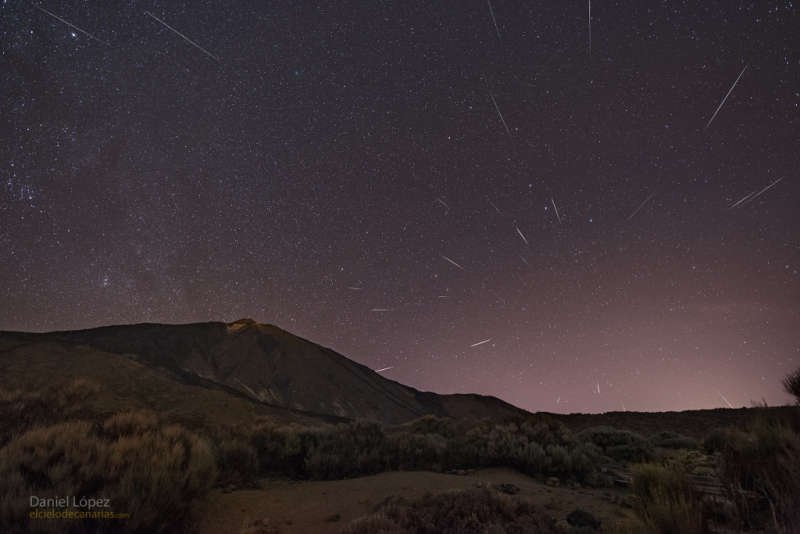
|
Credit & Copyright: Daniel López
(El Cielo de Canarias)
Explanation:
Named for a
forgotten
constellation, the
Quadrantid
Meteor Shower
is an annual event for planet Earth's northern hemisphere skygazers
It usually peaks briefly in the cold, early morning hours of January 4.
The shower's radiant on the sky
lies within the old, astronomically obsolete constellation
Quadrans
Muralis.
That position is situated near the boundaries of the modern
constellations Hercules, Bootes, and Draco.
About 30 Quadrantid meteors can be counted in this
skyscape composed of digital frames recorded in dark and moonless skies
between 2:30am and local dawn.
The shower's radiant is rising just to the right of the Canary
Island of Tenerife's Teide volcano,
and just below the familiar
stars of the Big Dipper on the northern sky.
A likely source of the dust stream that produces
Quadrantid meteors was identified
in 2003
as an asteroid.
Look carefully and you can also spot a small, telltale greenish coma above the
volcanic peak and near the top of the frame.
That's the 2018 Christmas visitor to planet Earth's skies,
Comet Wirtanen.
|
January February March April May June July August September October November December |
| ||||||||||||||||||||||||||||||||||||||||||||||||
NASA Web Site Statements, Warnings, and Disclaimers
NASA Official: Jay Norris. Specific rights apply.
A service of: LHEA at NASA / GSFC
& Michigan Tech. U.
Based on Astronomy Picture
Of the Day
Publications with keywords: meteor shower
Publications with words: meteor shower
See also:
- APOD: 2025 August 12 Á Perseids from Perseus
- APOD: 2025 August 2 Á Fireflies, Meteors, and Milky Way
- APOD: 2025 July 25 Á Twelve Years of Kappa Cygnids
- APOD: 2024 December 10 Á The Great Meteor Storm of 1833
- Quadrantids of the North
- APOD: 2023 December 17 Á Geminids over Chinas Nianhu Lake
- Orionids in Taurus
